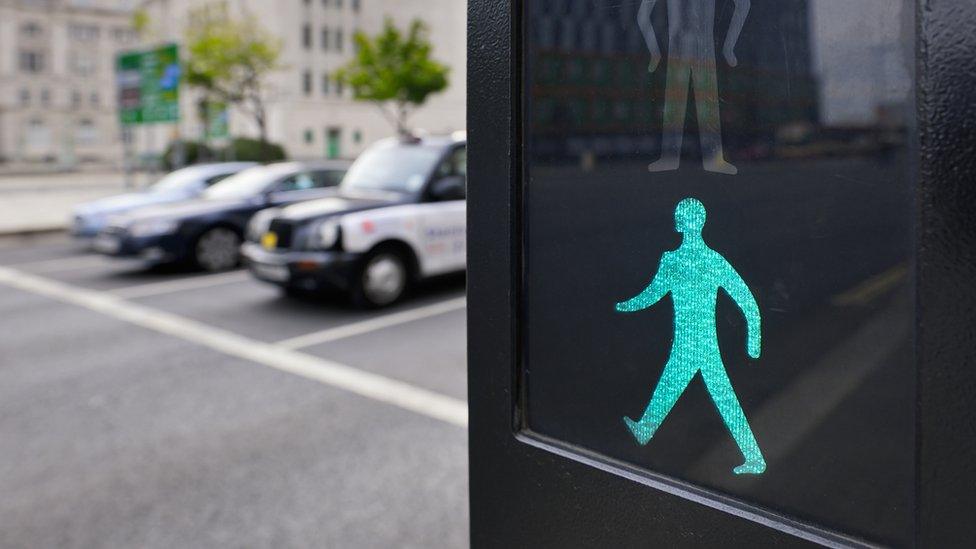Green man road crossings 'too fast'
- Published
- comments

The green man walking sign on pedestrian crossings may be too fast for elderly people to cross the road safely, suggest new draft guidelines, external for local councils.
The National Institute for Health and Care Excellence wants to make it easier for people with limited mobility to get out and about.
Most crossings allow between four and seven seconds before the green man starts flashing.
But many people are slower than this.
The average walking speed for older men has been estimated, external at 3ft (0.9m) per second, and 2.6ft per second for older women.
The speed for crossings recommended by the Department for Transport is around 4ft (1.2m) per second, but local councils can adjust the timing to suit their residents' needs.
The draft NICE guidelines also recommend that councils move bins, hanging baskets and any other obstacles that might get in the way of disabled pedestrians and others who may struggle to get around, such as parents with prams.
Prof Mark Baker, director of the centre for guidelines at NICE, said: "It should not matter whether you are on foot, in a wheelchair, have a visual impairment or if you're a parent pushing a pram.
"If streets, parks and other open spaces are well planned, everyone should be able to get around their local area easily.
"Safe, accessible streets and well-maintained parks can help people to get active and live longer, healthier lives."
Dr Justin Varney from Public Health England said: "Physical activity benefits everyone at all stages of life.
"People living with impairments are less active, and this can be due to the way the built environment, including public spaces and transport systems, is designed.
"Making physical activity accessible to everyone when planning spaces benefits communities in terms of health, environmental sustainability and economic regeneration."
The NICE recommendations are out for consultation until October.